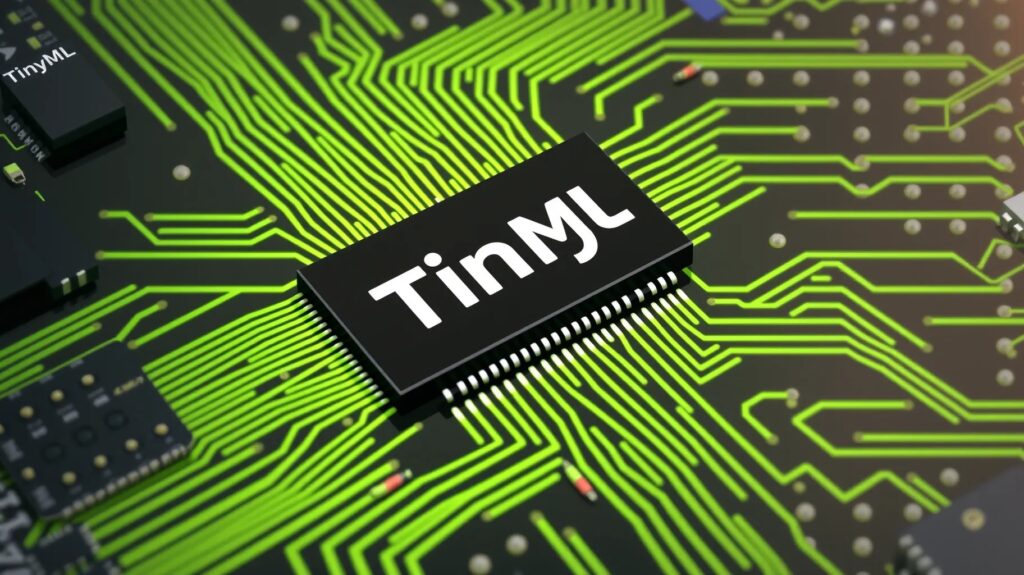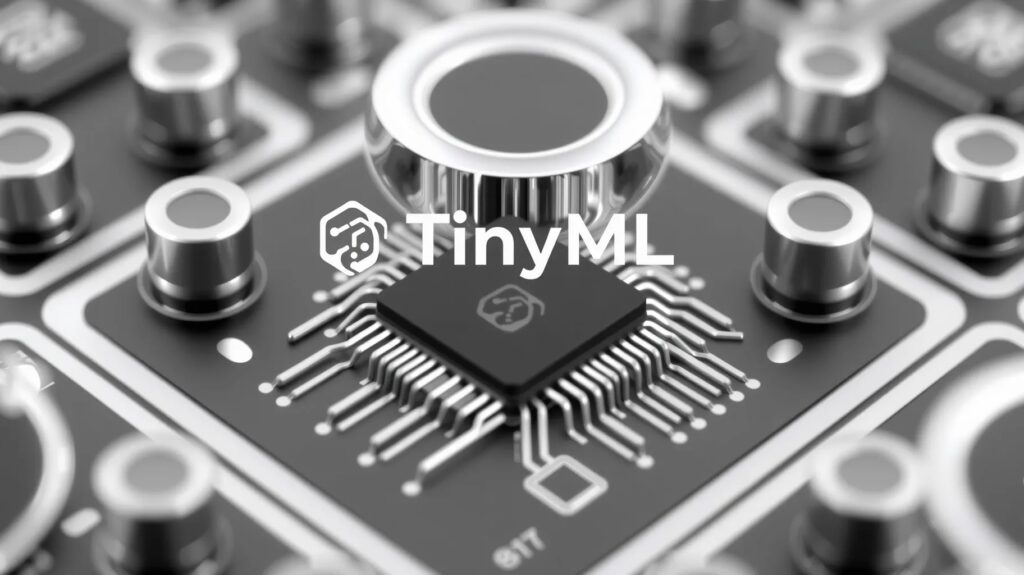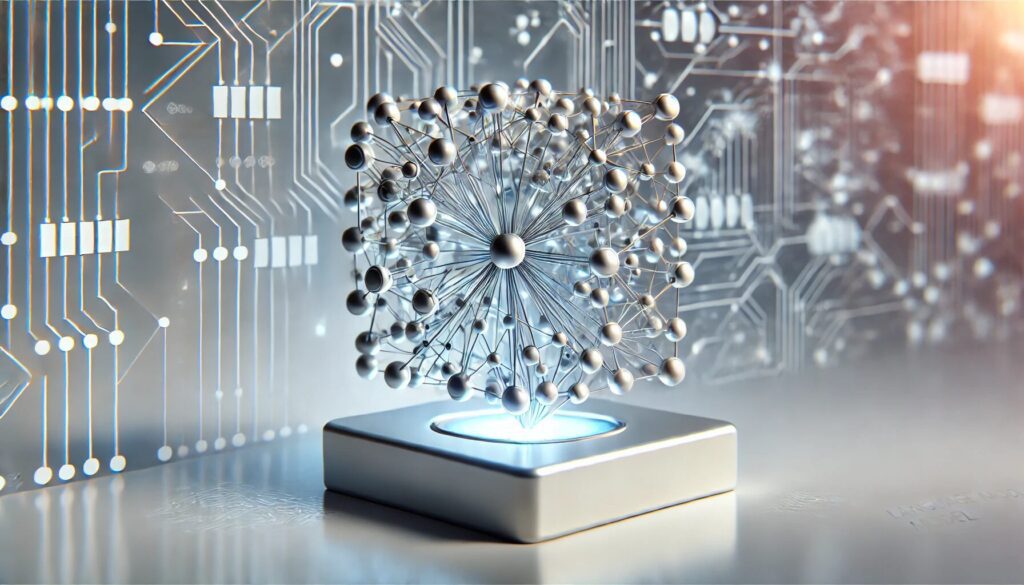
The Rise of TinyML and Its Energy Demands
TinyML is quickly becoming a game-changer in tech. We’re talking about machine learning models running on tiny devices like sensors and microcontrollers.
While the potential is massive, one of the main challenges is power consumption. These small devices often need to operate in power-constrained environments, meaning algorithms must evolve to be smarter about energy use.
But it’s not just about shrinking ML models. The entire process, from data collection to inference, must be optimized for low energy. That’s where we’re seeing real innovation. TinyML algorithms are being specifically designed to extend the battery life of devices while still delivering impressive performance.
The result? Energy-efficient, smarter, and greener technology for the future.
Why Low Power Matters in TinyML
Energy efficiency is crucial in TinyML because most of the devices it powers are in remote locations or embedded in products where battery life matters. Think wearables, health monitors, or industrial sensors. Imagine changing the batteries on thousands of devices frequently—it’s just not practical.
That’s why algorithms designed for low-power consumption are so important. They can dramatically reduce the energy needed for data processing and inference without sacrificing performance. Achieving this means carefully balancing accuracy, latency, and energy usage.
The growing demand for sustainable IoT systems is pushing the evolution of these energy-saving algorithms further.

Key Algorithms Pushing TinyML’s Efficiency
TinyML’s energy-efficient algorithms rely on several key techniques. One of the most effective strategies is model compression. By reducing the size of machine learning models, fewer calculations are required during inference, meaning less energy is used. Techniques like quantization and pruning can significantly shrink model size.
Quantization involves representing data with fewer bits, which reduces both storage and computation needs. Pruning, on the other hand, removes unnecessary parameters within the model, leaving a leaner, faster system. These methods ensure that low-power devices can still make quick and accurate predictions.
Another crucial development is event-driven computing. Here, devices only activate when they detect relevant events in their environment, avoiding constant data processing and saving a ton of energy.
Balancing Accuracy with Energy Efficiency
One of the biggest challenges in TinyML is the trade-off between accuracy and energy consumption. As models become smaller and less power-hungry, they can lose some predictive accuracy. The key is finding ways to optimize performance without sacrificing too much accuracy.
This is where techniques like knowledge distillation come into play. A large, highly accurate model trains a smaller model, allowing the smaller one to achieve similar performance while using less computational power. This clever transfer of knowledge means that even tiny, low-power devices can run sophisticated algorithms with minimal energy consumption.
Real-World Applications of Energy-Efficient TinyML
Energy-efficient TinyML algorithms are making their way into real-world applications at an astonishing pace. In wearable devices, energy efficiency is critical. For instance, fitness trackers rely on low-power algorithms to process data from multiple sensors like heart rate monitors and accelerometers without draining the battery too quickly.
In agriculture, TinyML-powered sensors monitor soil conditions, temperature, and moisture levels in remote fields. These sensors often run on batteries or even solar power, making low-energy algorithms a necessity. Similarly, smart homes are seeing a boost with energy-efficient TinyML models that monitor everything from security cameras to smart thermostats.
The drive for green technology has pushed companies to rethink how they implement machine learning in devices that need to last for years without maintenance or battery replacement.
The Growing Importance of Energy Efficiency in TinyML
In the world of TinyML, energy efficiency is not just a feature—it’s a requirement. Most TinyML applications involve edge devices that are deployed in environments where frequent battery replacement or recharging is simply not feasible. Devices like wearables, remote sensors, and smart home systems all rely on low-power solutions to stay functional for extended periods.
These devices often operate in harsh conditions with limited power sources, making energy optimization a crucial focus. To address this, researchers and engineers have worked tirelessly to create algorithms that reduce energy consumption without compromising on performance.
As Internet of Things (IoT) adoption continues to grow, the demand for energy-efficient TinyML will only increase. This means more innovation in how we build and deploy machine learning models on tiny, energy-constrained devices.
Techniques for Reducing Power Consumption in TinyML
Developing energy-efficient TinyML algorithms starts with cutting down on computational costs. The less computation required, the less energy consumed. One of the most effective techniques in this regard is model compression.
- Quantization: This technique reduces the precision of numbers used in calculations. For example, using 8-bit integers instead of 32-bit floating-point numbers can result in significant energy savings without noticeably impacting model performance.
- Pruning: By removing redundant or unnecessary parameters in a model, pruning helps make the model smaller and faster. This, in turn, leads to reduced energy consumption.
- Knowledge distillation: A large model teaches a smaller, more efficient model, enabling the latter to retain much of the former’s accuracy but with lower computational complexity.
By implementing these strategies, developers can make models that are lightweight and efficient, ensuring that edge devices operate within strict energy limits.
Event-Driven Computing: A Game Changer for Energy Savings
One of the most exciting developments in TinyML is the use of event-driven computing. Traditional computing often involves continuous data monitoring and processing, which can be incredibly energy-intensive. However, event-driven systems only activate when a specific event or condition is met.
This method is particularly useful for sensor networks that monitor environmental conditions like temperature, motion, or air quality. Instead of constantly running algorithms in the background, these systems “wake up” only when necessary, dramatically reducing energy usage.
For instance, a motion detector in a smart home system could remain in a low-power state until it detects movement, at which point the algorithm processes data and takes action. This “sleep mode” approach is being increasingly adopted in energy-sensitive applications.
Lightweight Architectures for Smarter Devices
Another major breakthrough for TinyML lies in the development of lightweight neural network architectures. Standard architectures like convolutional neural networks (CNNs) and recurrent neural networks (RNNs) are often too resource-intensive for low-power devices. That’s why researchers have created smaller versions of these networks, specifically tailored for edge devices.
- MobileNet is an example of a streamlined CNN designed for low-power devices. It uses depthwise separable convolutions to minimize computation while maintaining high accuracy.
- Tiny-YOLO, a simplified version of the YOLO object detection model, is optimized for real-time performance on edge devices. It achieves solid detection capabilities with minimal energy usage.
These architectures are shaping the future of smart devices, making it possible for even the smallest of systems to run complex tasks like image recognition or natural language processing.
| Neural Network Architecture | Primary Use Case | Power Consumption | Model Size | Accuracy | Trade-offs |
|---|---|---|---|---|---|
| MobileNet | Image classification | Low | Small (4.2MB) | High (~71% Top-1) | Optimized for mobile devices, good balance between speed and accuracy. |
| Tiny-YOLO | Object detection | Moderate | Medium (8.9MB) | Moderate (~55% mAP) | Fast inference, lower accuracy for small objects. Suitable for edge AI. |
| SqueezeNet | Image classification | Very Low | Very Small (1.25MB) | Moderate (~57% Top-1) | Extremely small model, trades accuracy for ultra-low power and size. |
| EfficientNet-Lite | General-purpose inference | Low | Medium (5.3MB) | High (~75% Top-1) | Optimized for speed and power efficiency, slightly better accuracy than MobileNet. |
| ShuffleNet | Mobile vision tasks | Very Low | Small (5MB) | Moderate (~65% Top-1) | Excellent for low-power devices but slightly lower accuracy. Ideal for smartphones. |
| DeepSpeech Lite | Speech recognition | Moderate | Large (47MB) | High (90% accuracy) | Good accuracy for speech-to-text, requires slightly higher power than vision models. |
| Google Edge TPU-Optimized Models | General-purpose edge ML | Ultra-Low | Very Small (<1MB) | Moderate (~60-70%) | Extremely low power usage, trades some accuracy for speed and energy efficiency. |
Notes:
- Power Consumption: “Low”, “Moderate”, and “Very Low” are relative measures based on average wattage used during inference on microcontroller or edge devices.
- Model Size: Indicates the storage size of the model, often critical for memory-constrained devices.
- Accuracy: This metric varies depending on the dataset used. Top-1 accuracy is often used for image classification, while mAP (mean Average Precision) is used for object detection.
This table shows how different models prioritize energy efficiency or accuracy based on their use case and design, allowing you to select the appropriate architecture depending on the power limitations and performance needs of your project.
Optimizing TinyML for Wearable Devices
The wearable tech market is booming, and TinyML plays a critical role in making these devices more intelligent while preserving battery life. Wearables like smartwatches or fitness trackers collect vast amounts of data from multiple sensors, yet they need to process this information with minimal energy consumption.
Energy-efficient algorithms help these devices strike the perfect balance between real-time data processing and extended battery life. For example, fitness trackers rely on accelerometers and heart rate sensors to provide insights without draining power. Low-power algorithms enable continuous health monitoring for days or even weeks on a single charge.
By leveraging TinyML, wearable devices can deliver personalized insights to users while maintaining a lightweight, energy-efficient profile.

Edge AI and the Quest for Sustainability
In today’s push for sustainable technology, TinyML is leading the way by significantly reducing the environmental impact of machine learning on edge devices. As more devices connect to the IoT, minimizing energy consumption becomes crucial, not just for practical reasons but also for reducing our carbon footprint.
TinyML’s focus on low-power algorithms means that even devices powered by renewable energy sources, such as solar panels, can remain operational for extended periods. This is especially important for remote applications like environmental monitoring, where access to traditional power sources is limited or nonexistent.
Moreover, energy-efficient algorithms allow for fewer battery replacements and lower overall energy consumption, which in turn helps reduce the amount of electronic waste.
Implementing Energy-Efficient Solutions in Industry
TinyML’s impact is being felt across a range of industries, where energy-efficient solutions are driving innovation. In industrial IoT (IIoT), for example, companies use low-power sensors to monitor equipment health, track usage patterns, and predict maintenance needs. These predictive maintenance systems rely on TinyML models to analyze data from machinery and alert operators of potential issues before they become critical.
By optimizing algorithms for low-energy consumption, these systems can continuously monitor equipment without draining power, leading to fewer operational disruptions and lower maintenance costs.
In smart cities, energy-efficient TinyML models are being used to manage traffic systems, monitor air quality, and optimize energy use in public buildings. By keeping devices running on minimal power, cities can provide real-time data and automation without overwhelming energy grids.
Reducing Power for Real-Time Decision Making
One of the most impressive aspects of TinyML is its ability to make real-time decisions on devices that operate with limited resources. This is especially valuable in applications where latency or delay can lead to poor outcomes, like in medical devices or autonomous systems.
Take the case of portable medical monitors. Devices that track vital signs in real-time, such as heart rate monitors or glucose sensors, depend on efficient TinyML algorithms to ensure that critical alerts can be processed instantly, even in low-power settings. Reducing power consumption without sacrificing speed or accuracy is crucial in these life-saving technologies.
Similarly, in autonomous vehicles or drones, energy-efficient algorithms enable quick decision-making based on real-time sensor data. By optimizing inference speeds and reducing energy requirements, these systems can operate longer without recharging, while still maintaining high accuracy in decision-making processes.
Challenges and Future Directions in Energy Efficiency
Despite the incredible advances in TinyML energy efficiency, challenges remain. For one, reducing energy consumption often comes at the cost of model complexity. Developers must constantly find the balance between making a model small enough to run on low-power devices and ensuring it remains accurate enough for practical use.
Another challenge is the growing need for on-device learning. While TinyML algorithms are currently optimized for inference, the ability to update models and learn from new data directly on the device would further reduce energy consumption and bandwidth usage. Research is ongoing to enable adaptive learning on tiny devices without significantly increasing power demands.
As the demand for AI at the edge continues to grow, we can expect to see further advancements in low-energy architectures and more efficient techniques for compressing and optimizing models. Energy harvesting technologies, such as solar power and energy scavenging, are also likely to be integrated with TinyML systems, allowing devices to recharge themselves while remaining active.
TinyML’s Role in the Future of IoT
TinyML is paving the way for a more sustainable IoT, where energy-efficient algorithms are essential to the long-term success of connected devices. As companies continue to innovate, we will likely see more industries adopt low-power AI solutions to extend battery life, improve device longevity, and reduce environmental impacts.
The next wave of innovation will see TinyML being integrated into smart infrastructure, healthcare systems, and consumer electronics, delivering real-time insights and automation while remaining incredibly energy-efficient. This evolution promises a world where technology is not only smarter but also kinder to the planet.
Resources for Energy Efficiency in TinyML
- Google’s Edge AI and TinyML Solutions
Google has been at the forefront of TinyML development, providing resources and tools to implement low-power machine learning models on edge devices. They offer various libraries and frameworks that make TinyML more accessible.
Google AI Blog on TinyML – This blog covers the latest research and advancements in the field of TinyML, particularly in energy-efficient AI models for edge computing. - TensorFlow Lite for Microcontrollers
TensorFlow Lite is a great tool for deploying machine learning models on edge devices. It includes a suite of optimization techniques that focus on minimizing power consumption. TensorFlow Lite for Microcontrollers is designed for devices that have limited processing power and memory.
TensorFlow Lite Micro – Official guide and tutorials to implement TinyML on ultra-low-power devices. - Edge Impulse: TinyML Made Easy
Edge Impulse is a platform that enables developers to build, deploy, and optimize TinyML models for low-power devices. Their tools focus heavily on energy efficiency, making it easier to build low-power machine learning applications.
Edge Impulse – A platform providing resources to develop energy-efficient TinyML models with tools for optimizing power consumption. - TinyML Foundation
The TinyML Foundation promotes the development of ultra-low-power machine learning technologies. They provide research papers, case studies, and industry reports on the evolution of TinyML algorithms for energy efficiency.
TinyML Foundation – A hub for researchers and developers interested in the latest advancements in low-power TinyML. - Arm’s TinyML Technology
Arm has been a pioneer in the low-power edge computing space, offering solutions for energy-efficient machine learning on microcontrollers. Their resources provide insights into hardware optimizations that complement TinyML software improvements.
Arm Cortex-M for TinyML – Information on TinyML hardware optimizations designed to enhance energy efficiency in edge devices.





